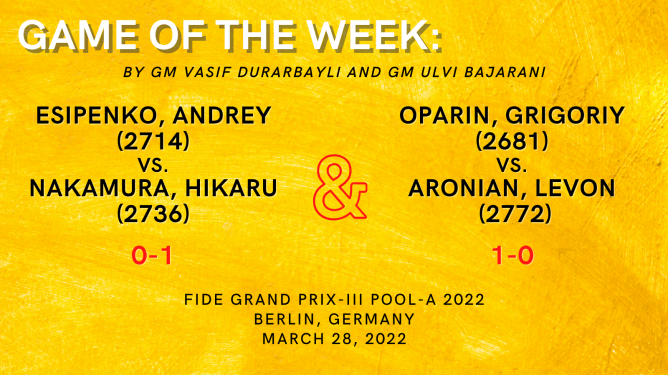The following question frequently arises in practice: How can I create winning chances if I’m playing with Black?
The question above is very difficult to answer because there are several possible variations depending on the opponent, and a solution that would work in one situation might not work in another. There are three possible solutions that are frequently implemented:
1. Escalate the situation from the opening. This idea can be further divided into three possible playing styles:
a. Playing openings with a dubious reputation (Pirc Defense, Alekhine Defense, Chigorin Defense, etc.); however, the opponent playing with White:
i. Might play solid variations to avoid risk. In this case, the side taking the risk (Black) should be ready to play solid positions, or;
ii. Knows the theory behind risky variations, which is the worst-case scenario. This increases Black’s chance of losing as the side taking the risk;
b. Playing risky variations in openings with a solid background. If the idea is novel, it might be tested; in general, however, this strategy is not ideal since it allows the opposite side to consolidate its position (which we will observe in one of the games);
c. Playing openings with forced variations (Sicilian Najdorf, etc.). The problem is that such variations have a lot of drawing paths known to the theory;
2. Escalate the situation in the middlegame. For example, attack the rival king or take a huge risk (recall the first rapid game in the match Ivanchuk-Jussupow in Brussels, 1991). In this case, the defending side (White) should be able to find the best moves to survive. The best method is to give the opponent the chance to choose from equal possibilities and escalate the situation in the case of time trouble. Of course, sometimes the side escalating passes through difficult positions, but unlike computers, the human tends to miss the right variation if the complexity of problems on the board is relatively higher than in typical situations. We will see this in one of the games;
3. Don’t attack at all and play solid positions. This might be the best situation for Black (recall the game Gurevich-Short in the Manila 1990 Interzonal) but requires more effort for Black since White has more reserves in chess compared to Black.
Now, let’s look at the 2 Games of the Week. In both cases, Black played solid openings. The difference is that, in the first game, Black escalated in the opening, while in the second game, Black escalated in the middlegame.
Also, please consider picking up one (or all!) of the products below or/and donating.
If you want to:
- Improve your general understanding of the game: 2021 in 52 Games
- Improve your tactics: Tactics by Bajaranis
- Improve your endgame technique: Endgames by Bajaranis
- Wear your support: “Endgames by Bajaranis” Cover T-Shirt, Long Sleeve T-Shirt, Sweatshirt
Game of the Week: Esipenko vs. Nakamura
Game of the Week: Oparin vs. Aronian
Thank you for reading! If you enjoyed this article, please click the “Share” button, and if you find any noteworthy games that you think should appear on Game of the Week, please send us a message on Chess.com.
Please note that Game of the Week will cover games played from Saturday to Saturday of each week, and any games played on Sunday will go to the next week. See you next Sunday!
Contributors:
GM Ulvi Bajarani
Edited by Della Almind

Leave a Reply